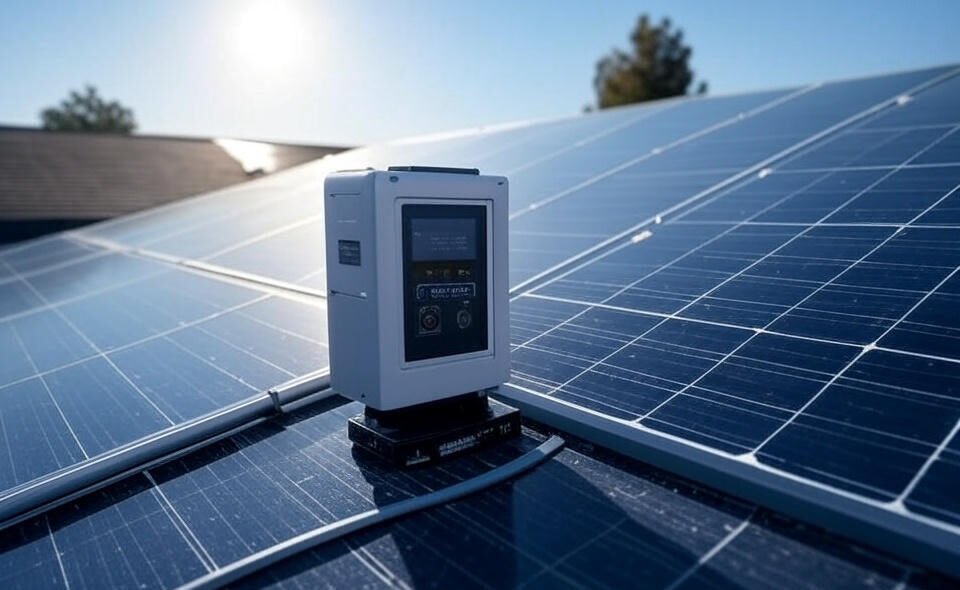Solar power systems provide a reliable way to harness clean energy for homes, cabins, or off-grid setups. A key component in these systems is the charge controller, which ensures batteries charge safely and efficiently. Many people setting up solar systems ask, “What size charge controller do I need?” Choosing the right size is critical to protect your batteries and maximize energy output. We explains how to determine the correct charge controller size for your solar setup. It covers the purpose of charge controllers, types, sizing calculations, and practical examples, all in a clear and user-friendly format.
Understanding the Role of a Charge Controller

A charge controller acts as a gatekeeper between solar panels and batteries. Its primary job is to regulate the voltage and current flowing from the panels to prevent overcharging or damaging the battery. Without a charge controller, batteries could overheat, lose capacity, or even fail completely. The device also prevents reverse current flow from the battery to the panels at night, which could drain stored energy. Most solar systems, except those with very small panels under 5 watts, require a charge controller. The size of the controller, measured in amps, depends on the solar array’s power output and the battery’s voltage.
Types of Charge Controllers
Two main types of charge controllers dominate the market: PWM and MPPT. Each has distinct features that impact how you size them for your system.
PWM Charge Controllers
Pulse Width Modulation (PWM) controllers are simple and budget-friendly. They work by reducing the voltage from the solar panels to match the battery’s voltage. This makes them ideal for systems where the panel and battery voltages are closely aligned, such as a 12V panel with a 12V battery. However, PWM controllers lose some energy as heat during this process, making them less efficient. When sizing a PWM controller, you calculate based on the solar panel’s total wattage and the battery’s voltage, adding a safety margin for environmental factors like heat or cloud cover.
MPPT Charge Controllers
Maximum Power Point Tracking (MPPT) controllers are more advanced and efficient. They adjust the voltage and current from the panels to optimize power delivery to the battery. This allows MPPT controllers to work with panels that have higher voltages than the battery, converting excess voltage into additional current. While they cost more, MPPT controllers can increase energy harvest by up to 30%, especially in cold weather or with mismatched voltages. Sizing an MPPT controller follows a similar process to PWM but requires checking the maximum input voltage to ensure compatibility with your panels.
Factors to Consider When Sizing a Charge Controller
Several elements influence the size of the charge controller you need. Understanding these ensures your system operates safely and efficiently.
Solar Panel Wattage
The total wattage of your solar panels forms the foundation of your calculation. A system with higher wattage, such as 1000W, demands a larger controller than one with 200W. Knowing the combined power output of all panels in your array is the first step in determining the controller’s capacity.
Battery Voltage
Battery voltage, typically 12V, 24V, or 48V, plays a significant role. Dividing the total panel wattage by the battery voltage gives you the current in amps, which the controller must handle. Lower voltage systems produce higher currents, requiring a controller with a higher amp rating.
Maximum Input Voltage
Especially for MPPT controllers, you must consider the maximum open-circuit voltage (Voc) of your solar panels. Panels produce higher voltages in cold temperatures, so the controller must handle this peak voltage without damage. Checking the panel’s Voc rating and factoring in temperature effects is essential.
Safety Margin
Adding a safety margin of at least 25% to your calculated amperage accounts for real-world conditions like high temperatures, dust, or reduced sunlight. This buffer ensures the controller can handle unexpected surges or inefficiencies without failing.
How to Calculate the Right Charge Controller Size
Calculating the correct charge controller size involves a straightforward process that anyone can follow with basic information about their solar system. Start by gathering the total wattage of your solar panels and the voltage of your battery bank. Divide the wattage by the voltage to find the current in amps. Then, multiply this by 1.25 to include a safety margin. For MPPT controllers, also verify that the controller can handle the maximum input voltage from your panels, especially in cold conditions. Rounding up to the nearest standard controller size, such as 30A or 40A, ensures reliability. Online solar charge controller calculators can simplify this process, but manual calculations work just as well.
Step-by-Step Calculation Example
Consider a system with 400W of solar panels and a 12V battery. Divide 400 by 12 to get 33.33 amps. Multiply by 1.25 for the safety margin, resulting in 41.66 amps. A 50A controller would be appropriate. For an MPPT controller, check the panel’s open-circuit voltage. If two 100W panels in series have a Voc of 22V each, the total is 44V. Add 25% for cold weather (55V), and ensure the controller supports this input voltage. This method ensures you select a controller that meets your system’s needs.
Adjusting for System Growth
When planning your solar setup, consider future expansions. If you might add more panels later, choose a controller with a slightly higher amp rating. This avoids the need to replace the controller when upgrading. For example, a 50A controller for a 40A system leaves room for growth without overspending.
Practical Examples of Charge Controller Sizing
To illustrate, let’s look at three common scenarios. For a small 12V system with 200W of panels, divide 200 by 12 to get 16.67 amps. After adding a 25% margin, you need a 20.84A controller, so a 30A PWM controller works well. In a 24V system with 600W panels, the calculation is 600 divided by 24, equaling 25 amps. With the margin, you need 31.25 amps, so a 40A MPPT controller is suitable, provided it handles the panel’s Voc. For a larger 48V off-grid setup with 2000W panels, divide 2000 by 48 to get 41.67 amps. After the margin, a 60A MPPT controller ensures efficiency and room for expansion.
Common Sizing Mistakes to Avoid
Mistakes in sizing can lead to system failures or reduced performance. One common error is neglecting the safety margin, which can cause the controller to overload during peak production. Another is mismatching voltages, especially with PWM controllers, leading to energy loss. Some users undersize their controller, leaving no room for system growth. Failing to check the maximum input voltage for MPPT controllers can also result in damage during cold weather when voltages spike. Always double-check your calculations and system specs to avoid these pitfalls.
Choosing Between PWM and MPPT for Your System
Deciding between PWM and MPPT depends on your setup and budget. PWM controllers suit small, simple systems where panel and battery voltages match closely. They are affordable and reliable for basic setups like RVs or small cabins. MPPT controllers shine in larger systems or those with mismatched voltages, offering better efficiency and flexibility. If your system operates in varied weather or you plan to expand, MPPT is worth the higher cost. Evaluate your needs and long-term goals before choosing.
Conclusion
Selecting the right size charge controller is essential for a safe and efficient solar power system. By understanding your solar panel wattage, battery voltage, and the differences between PWM and MPPT controllers, you can make an informed choice. Follow the step-by-step calculation process, include a safety margin, and consider future expansion to ensure reliability. Whether you’re powering a small off-grid cabin or a large home system, the right charge controller keeps your batteries safe and your energy flowing. Take the time to calculate carefully, and your solar setup will perform at its best for years to come.
For more articles: https://quicktrends.co/








